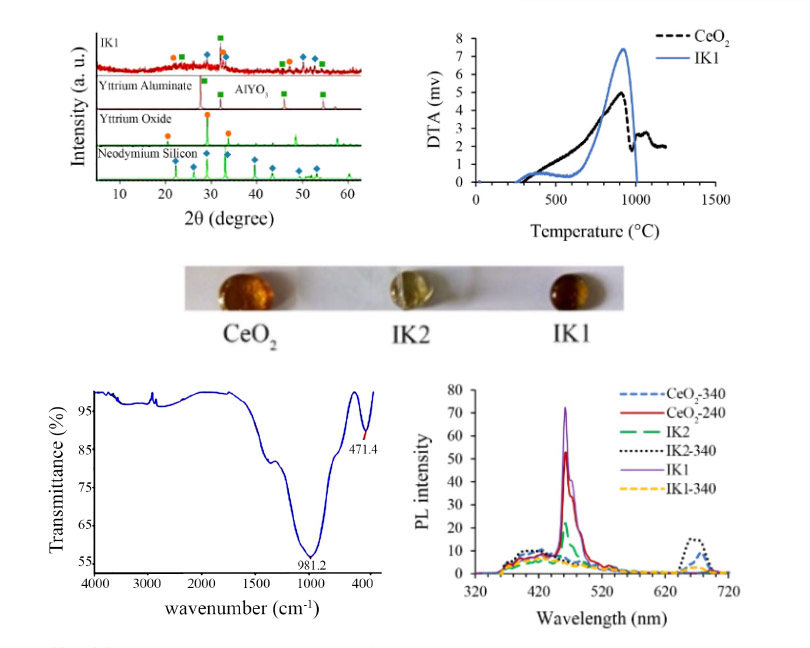Effects of cerium oxide and cerium sulfate on the optical behavior of synthesized garnet glass ceramics
- 1 Department of Ceramics, Materials and Energy Research Center, Karaj, Iran
Abstract
In this study, YAG silicate glasses were prepared by incorporating cerium sulfate and cerium oxide salts (composition: 17YO3-33Al2O3-40SiO2-2AlF3-3NaF-2CeO2-3B2O3) using the melting method. Subsequently, glass ceramics were obtained through heat treatment of the base glasses. According to the photoluminescence spectra of both glasses, emissions were observed at wavelengths of 466 nm and 435 nm, attributed to cerium ions. It was shown that the garnet crystals formed less during the heat treatment process in the sample containing cerium sulfate compared to the sample with cerium oxide. The emission spectra of both glass-ceramics, when excited at 240 nm, fall within the wavelength range of 460 nm. Also, emissions at wavelengths of 534 nm and 660 nm were observed under excitation at 340 nm. Heat treatments were conducted using three methods: in an oxide atmosphere using a tubular furnace (single-step), via spark plasma sintering (SPS) of powder, and in a hydrogen atmosphere (with two-steps heating). According to the XRD results, the entry of cerium into the garnet structure was affected by the heat treatment duration of 24 h and the temperature of 1060 °C. Finally, by comparing the spectroscopic results, it was found that the optical response of the garnet glass-ceramic synthesized in the hydrogen atmosphere occurred at a wavelength of 400 nm, suggesting its potential application in the LED industry.
Downloads
References

Copyright (c) 2024 A. Faeghinia

This work is licensed under a Creative Commons Attribution 4.0 International License.
Copyright
Authors are the copyright holders of their published papers in Synthesis and Sintering, which are simultaneously licensed under a Creative Commons Attribution 4.0 International License. The full details of the license are available at https://creativecommons.org/licenses/by/4.0/.
All papers published open access will be immediately and permanently free for everyone to read, download, copy, distribute, print, search, link to the full-text of papers, crawl them for indexing, pass them as data to software, or use them for any other lawful purpose without any registration obstacles or subscription fees.












